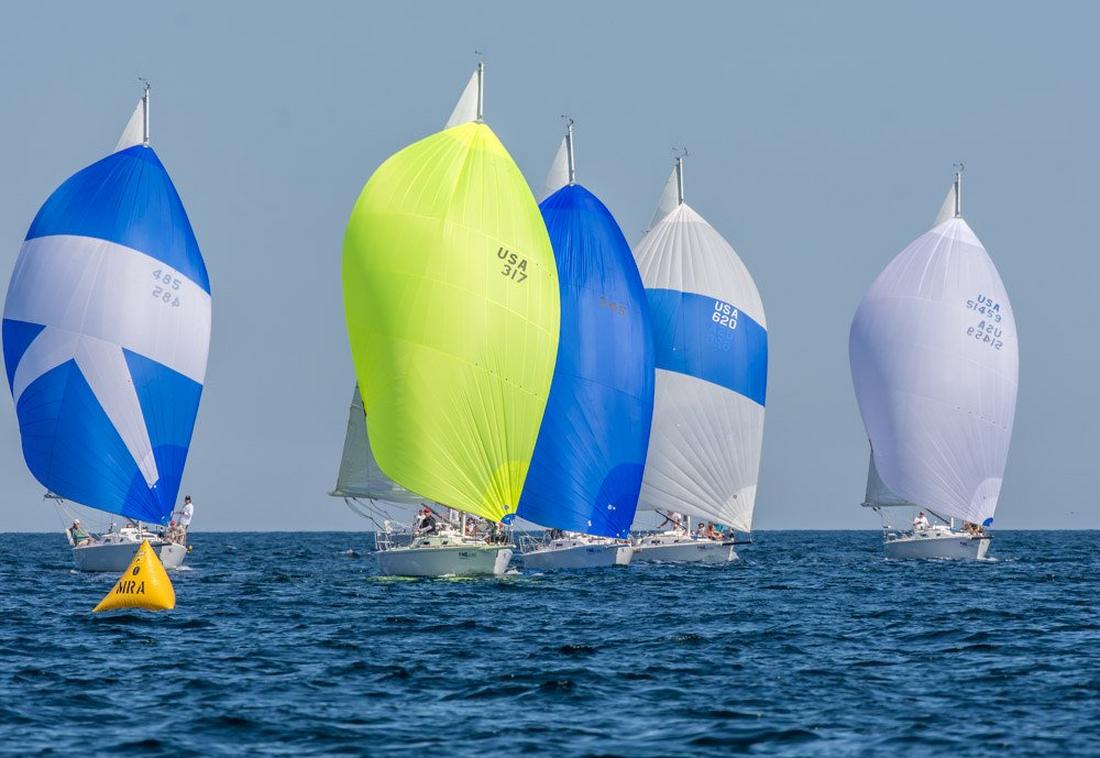WINNER’S DEBRIEF: ONE REGATTA J/105 SKIPPER DAVE NELSON
The 2016 ONE Regatta (Offshore New England Championships) took place in late August out of Marblehead, MA. 13 J/105s competed as a one design fleet, and Dave Nelson’s team on Got Qi won the ten race series by posting only one finish out of the top four. We caught up with Dave after the event.
What conditions did you encounter at this event?
We saw fairly light conditions on day 1 of the regatta, probably around 5-10 knots. On days 2 and 3 we saw better wind, ranging from 8 – 15 knots.
How prepared were you and your team and the boat?
The core of the team (myself, owner Matt Pike, Dennis Bell, and Bill Collins) have been sailing the boat every Wednesday night in Hingham for the past eight years. We sail with spinnakers in a very competitive fleet in a challenging venue (lots of current, islands, shifty winds). Over the years, we have been able to perfect our boat handling to the point where we don’t have to think about it.
Just prior to the event we hauled the boat to make sure the bottom was clean. We have black bottom paint and it is difficult for the diver to see where he has cleaned. I’m glad we did this because there were a couple of areas that the diver had missed, on the bottom of the keel and the bottom of the rudder (big clumps of grass growing off the keel and rudder).
What was the biggest contributor to your success in winning this regatta?
We had consistently good starts at or near the favored end. After that, our boat speed kept us in the hunt even when the wind didn’t quite go our way. We had one bad start and rounded the windward mark in twelfth, but were able to claw back to a fourth. Lastly, our team work and boat handling never cost us a place in any race.
We heard from your competitors that you were quite quick; can you give us some insight on why you guys were so fast?
We purchased a North Light Air Jib and a North spinnaker just prior to the event, and we think this was a big factor in our boat speed. We had used the sails in only one PHRF race before, so we were a little nervous about what to expect. Upwind the light air jib gave us the punch we needed to get through the Marblehead chop. Downwind, the new spinnaker really rotated to windward nicely, allowing us to sail low and fast.
Also I think the light air design was the right sail for this regatta. There were other boats with all purpose jibs and I know of at least one competitor that switched from the AP to the light air sail. The J/105 class now allows for each boat to carry two jibs, so picking the right jib for the conditions is becoming a factor in the boat set-up decision making process.
Can you let us know how you and your team were setting the boat up?
I always check the morning of the first day to make sure the rig is at the tuning guide’s base setting. We adjust from there based on the wind conditions. On days 1 and 2 we sailed at the light air rig setting (0 – 6 knots). On day 2 the wind came up over 6 knots and we talked about tightening to the next setting, but decided against this since we felt fast. On Day 3 we tightened up to 7-12, one below the base, for the last race of the day. I’d say we were usually one setting looser than what the tuning guide called for.
Can you give us three things that you and your team would do in making your boat go fast?
- Because the jib was new to us, we were constantly evaluating the jib car setting and in the end we set it a little further forward than what the tuning guide specified.
- The crew was constantly adjusting sails, while giving feedback to the skipper and trimmer about our relative speed and point.
- We were very conscious about where the crew was placed, especially downwind; we made sure the crew was grouped together and forward, heeling the boat to windward once the wind conditions made this feasible.
Tell us about your team and their crew positions.
All of the team members have college sailing experience and now sail a variety of other one design and PHRF boats. We have a very deep team.
- Dave Nelson, Skipper
- Matt Pike (owner), Pit/Jib Trimmer
- Tom Robinson, Mainsheet/Tactician
- Ken Delpapa, Spinnaker Trimmer
- Dennis Bell, Bow
- Bill Collins, mid bow (halyard jumper/sewer)
As the skipper, can you tell us how you interact with the crew during a race?
Upwind, I have a fairly constant flow of information with the tactician and the jib trimmer about boat speed and positioning on the race course. Downwind, I am in constant communication with the spinnaker trimmer about speed and pressure. When the boat speed or pressure is up, we sail deeper; when the speed or pressure is less, we head up.
Lastly, what are some things you and your team would like to work on for future events?
I want to try going wing and wing with the asymmetric spinnaker. We haven’t yet been able to practice this enough to try it in a race.






